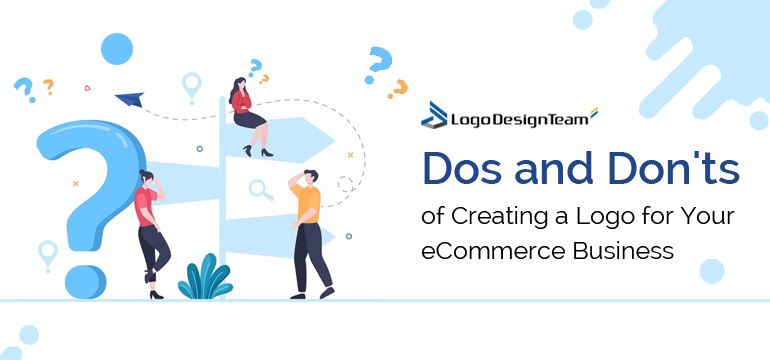Logos are visual elements that represent different businesses and organizations. They provide a sense of identity and familiarity for customers. But, more importantly, they are one of the first images people see when visiting a company’s website and represent what a brand stands for.
According to the experts from Brandly360, you can explore various ways to influence your customers’ purchasing decisions. Logos, too, can have a significant impact on your company and the way people perceive it.
The wrong choice in this regard can lead to poor sales. However, if you manage to get the design right, the popularity of your brand may exceed your expectations in no time.
Consumers prefer to purchase goods from online stores with clear reasoning behind their logo design — your logo needs to send a message about what your business stands for. And while everyone can have their own opinion on what constitutes a good logo and what not, there are still a few universal rules you can stick to when completing your design.
Here are a few guidelines that you can use to create a stellar logo:
Do Not Use Too Many Colors
Different colors can evoke various emotions and feelings. Depending on the color you are looking at, you might feel more energetic or experience a sudden wave of melancholy. Some hues and shades can even make you hungry or help you relax. Therefore, color psychology can be your best friend in building a strong, relatable brand. And it all starts with selecting the colors for your logo.
To illustrate it in the example, it is probably best to take a closer look at fast-food restaurants. Many of the most popular chains use colors such as red or yellow in their logos because they are famous for evoking the feeling of hunger. Brands that want to be associated with growth and health use green (e.g., Whole Foods, Tropicana), while the ones that want to be perceived as friendly and cheerful use orange (e.g., Nickelodeon, Fanta).
Still, if you try to incorporate too many colors into one single logo, you might end up with a design that does not stand out from the crowd. Instead, it might look blurry or make customers feel mixed emotions. For this reason, it is recommended to stick to no more than three colors in your logo design.
Do Keep Things Simple
When designing your logo, it is easy to get carried away. It can result in a busy and chaotic design that only confuses your audience.
Nevertheless, everyone should be able to have an idea of who you are and what you are selling from the very first glance.
The main point of keeping your logo simple is to avoid overwhelming your audience with too much information. Avoid forcing your customers to study the logo carefully in search of different elements to determine what your brand is all about.
Additionally, it is essential to remember that overly-detailed drawings do not scale down well — another reason you should stick to simple but not overly minimalist design.
Your logo may look perfect on a billboard or at the top of your website when it is big and scaled up. But once it is scaled down to a favicon (16×16 px image that appears in the top left corner of your browser tab), it may be challenging to recognize or simply look blurry and sloppy.
Do Not Copy Other Brands
There is a thin line between what one can call inspiration and what is straight-up plagiarism. If you want to create a logo design inspired by other brands or products, be careful not to cross this line.
Aside from being unethical, plagiarism can create negative publicity around your brand. It is definitely not something you want or need, especially if you are new to the market and need revenue to keep your business afloat.
Remember that the primary goal of a brand is to offer something different from the others — unique products or services that make you stand out from the crowd of competition. Hence, your logo should be original and authentic.
If you are afraid that you might accidentally come up with a design that imitates something else, you can show your initial ideas to friends and ask whether your logo reminds them of something. Alternatively, fellow eCommerce business owners may be able to assist you in avoiding plagiarism in your design.
Do Keep It Mobile-Friendly and Horizontal
When designing a logo for your eCommerce business, it is always wise to look at it from a long-term perspective. It means that you should not only make it mobile-friendly by opting for a simple and readable design but also make it horizontal.
That is because eCommerce logos are often positioned in the top left corner, whether the website is viewed on a desktop or mobile. It automatically draws the attention of the viewers who see it in the navigation bar.
If you place your logo horizontally, you can make the most of the space available and avoid a messy look. Horizontal logos are also flexible and scalable, making it easier to use them for promotional purposes.
In Conclusion
As you can see, a logo is a vital part of any brand’s marketing strategy. It allows you to create a distinct identity for your business and can make a memorable impression on your customers, both the existing and the potential ones.
Depending on your particular skills, you can design the logo for your eCommerce business yourself or consider working with a professional designer who will help turn your ideas into a trademark for your organization.
When creating a logo, remember that you should try to keep things as simple as possible and avoid using too many colors in your design. It is also crucial to never copy other brands and keep your logo mobile-friendly and horizontal so you can easily scale it to different sizes.




